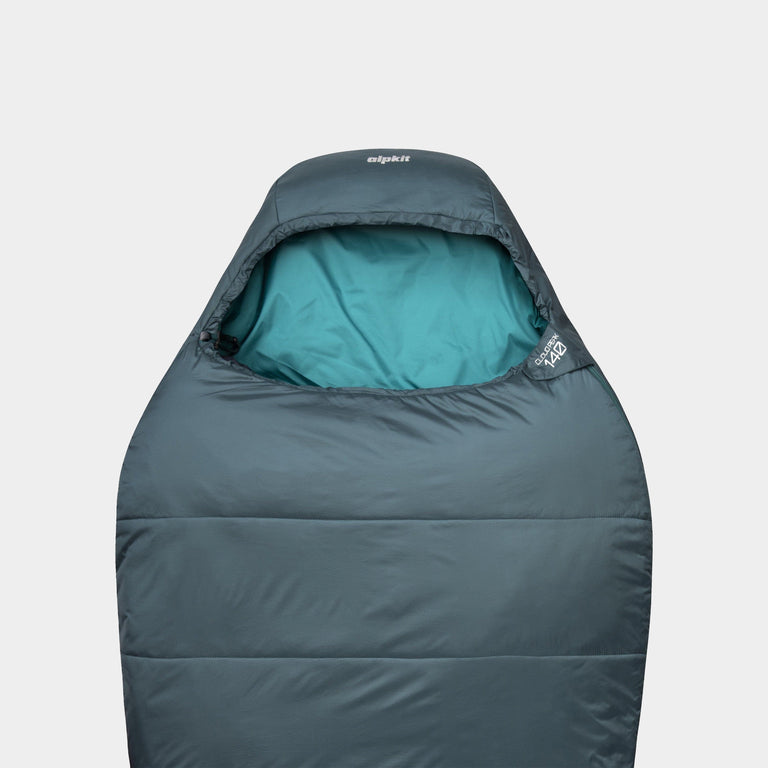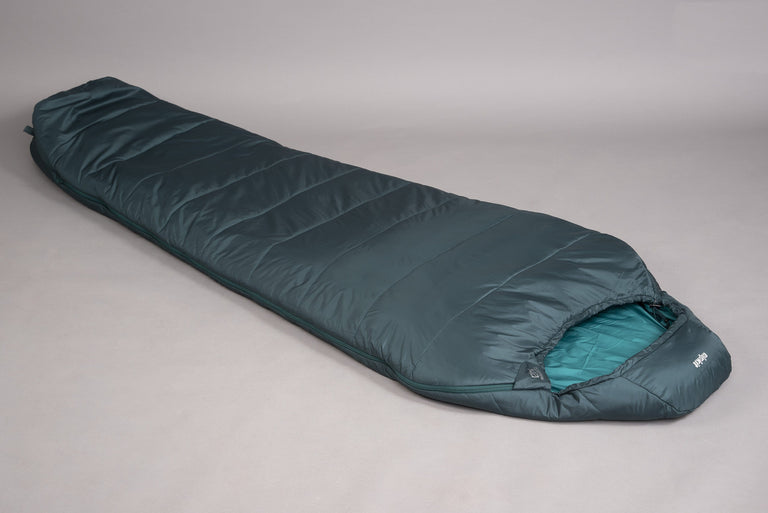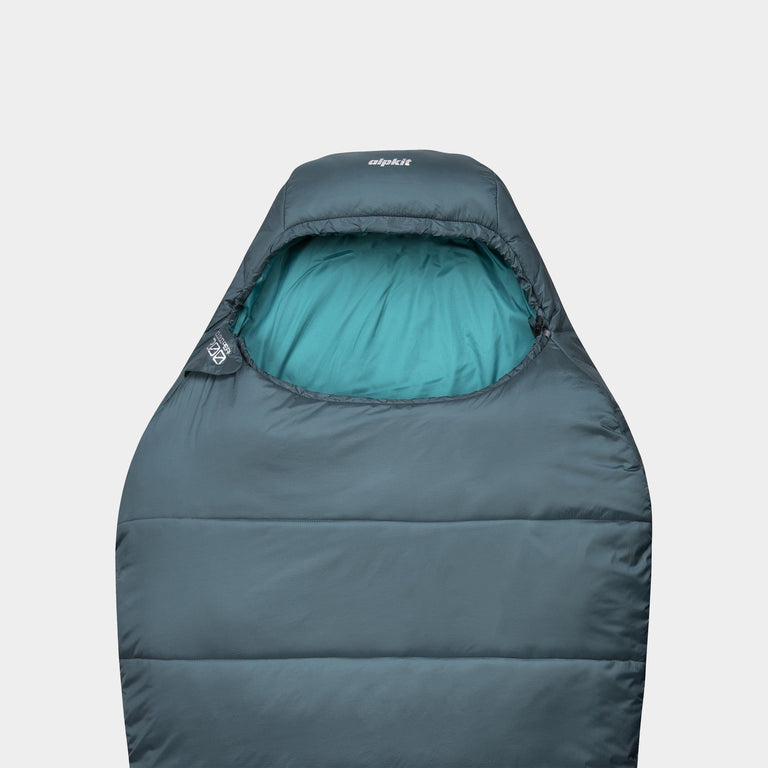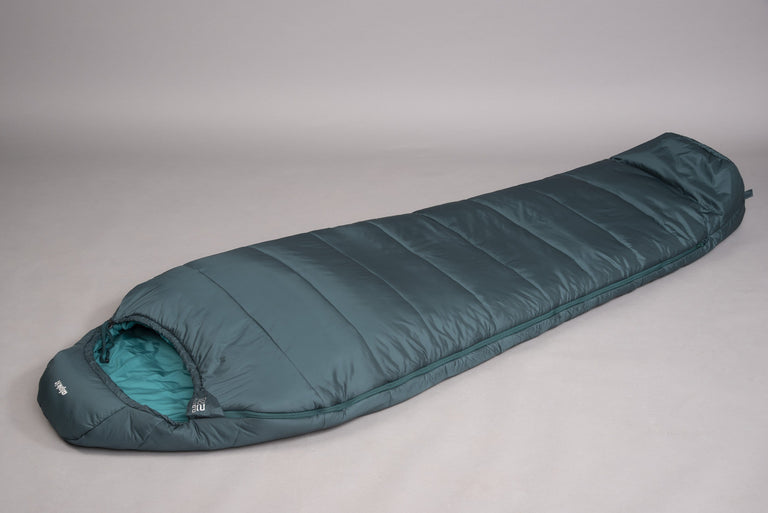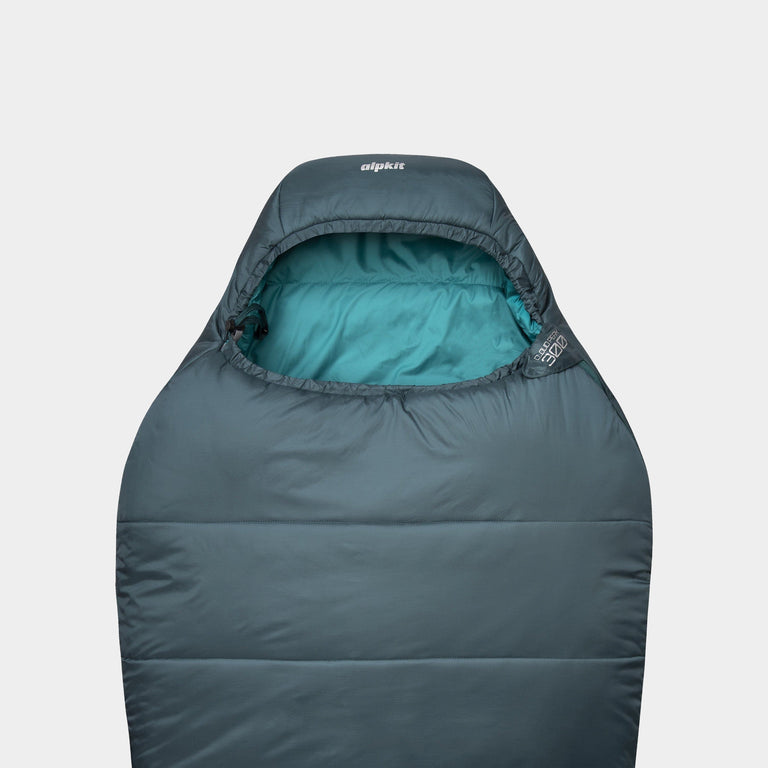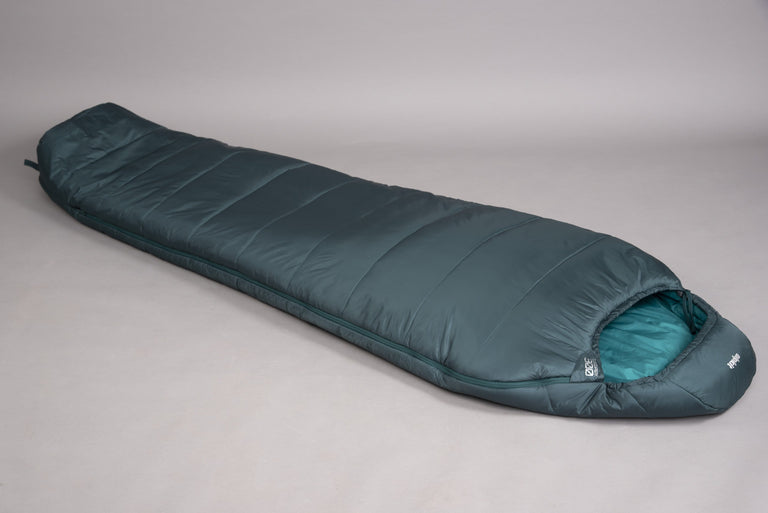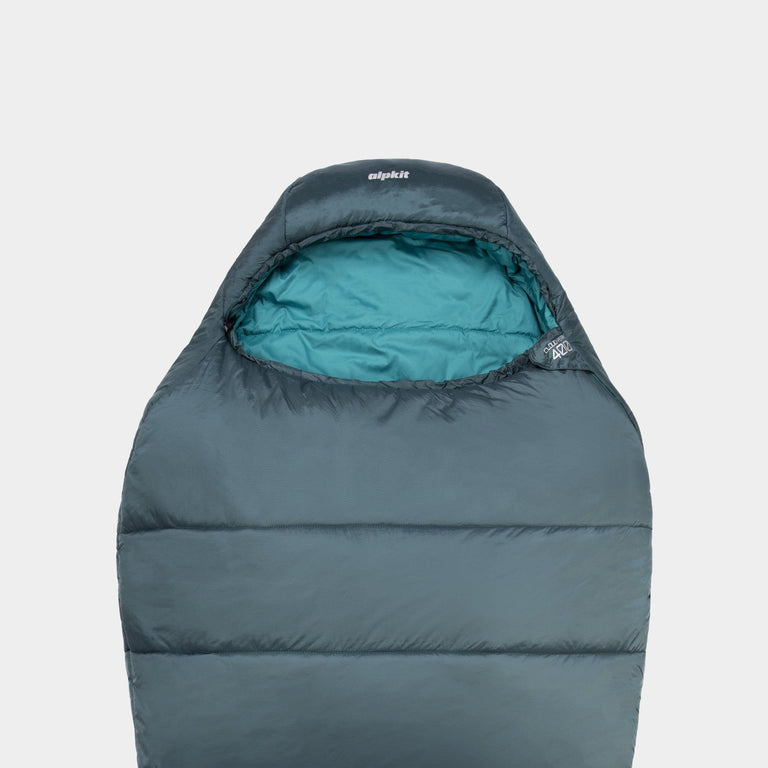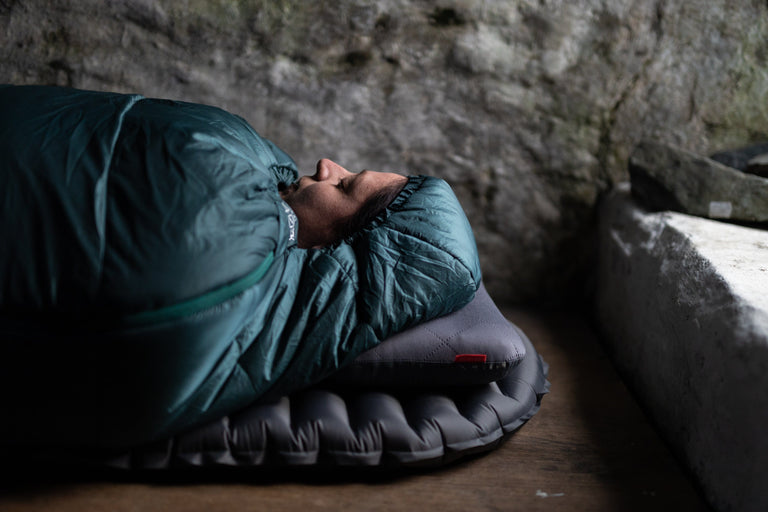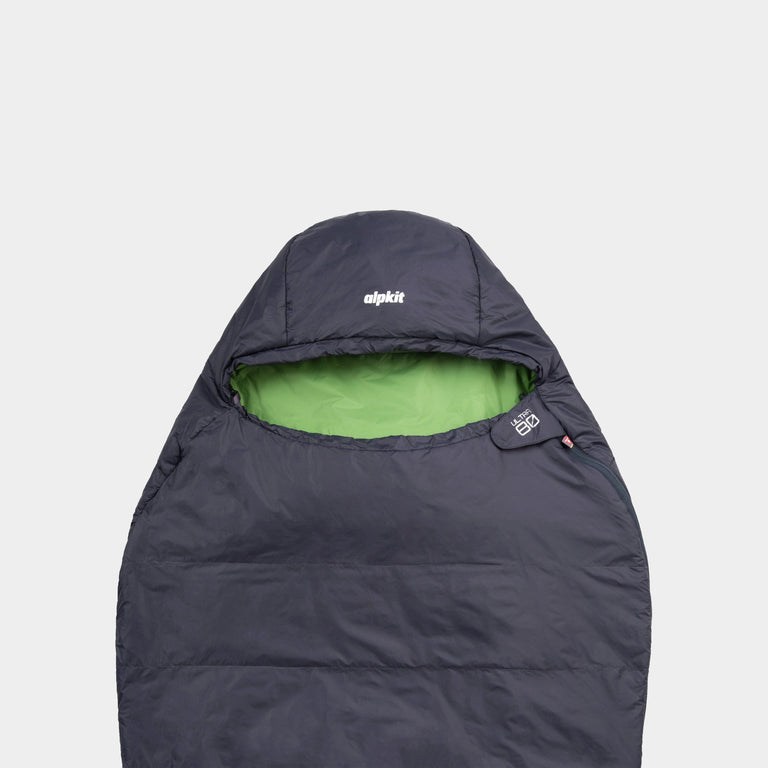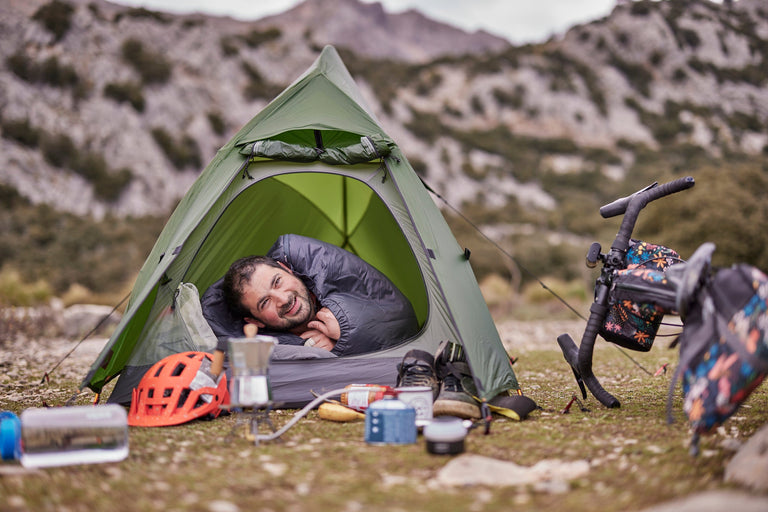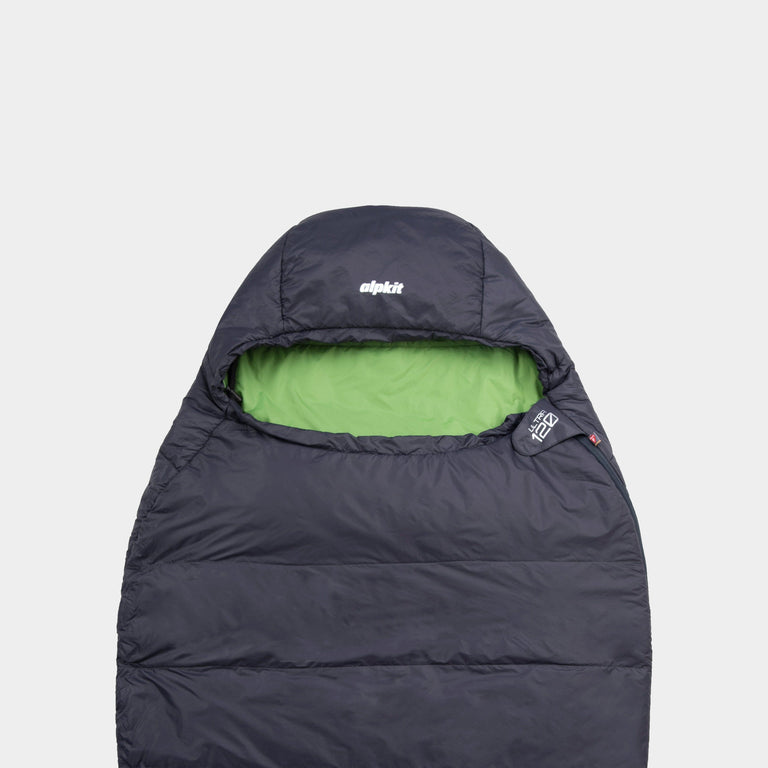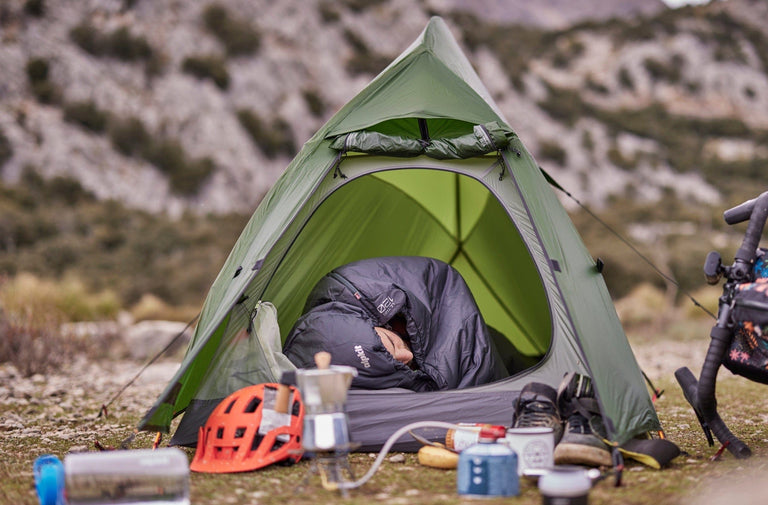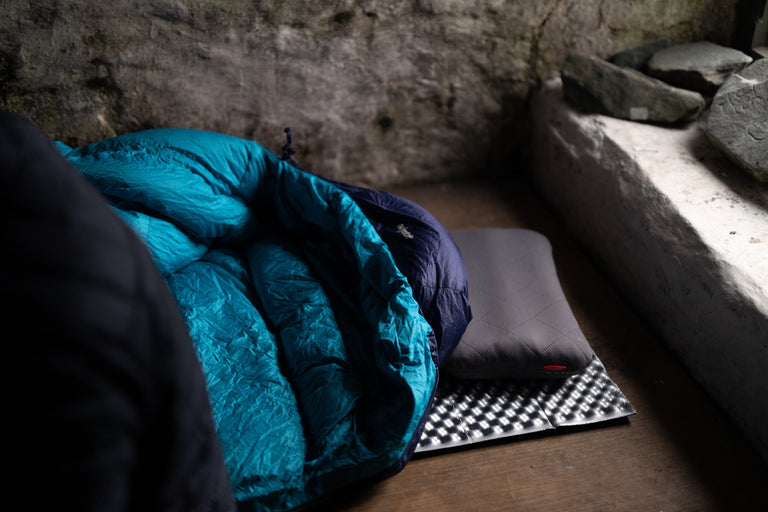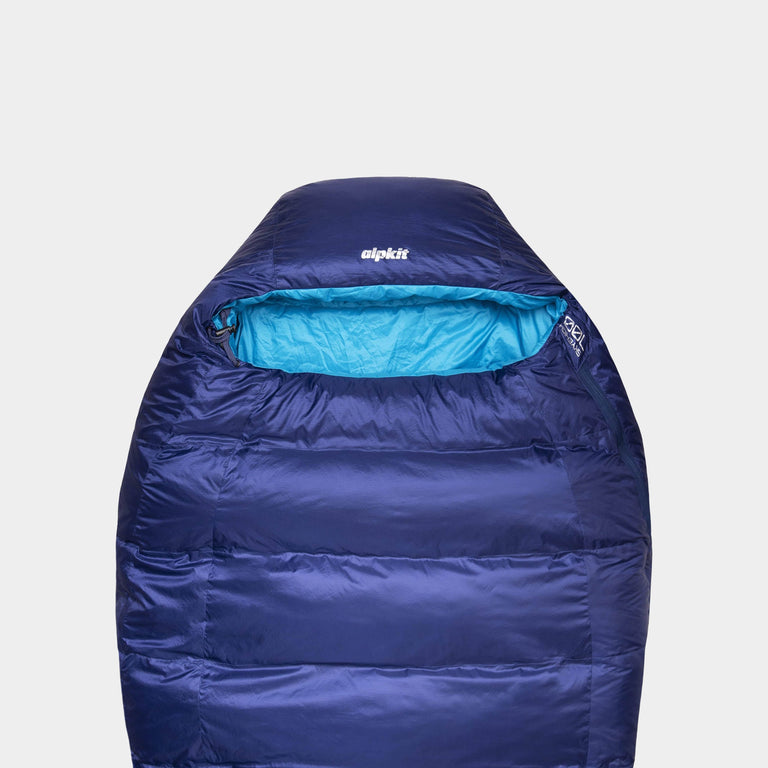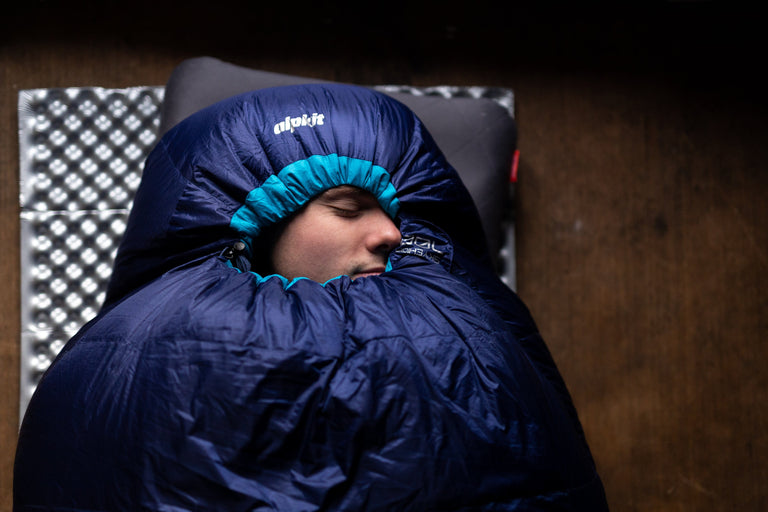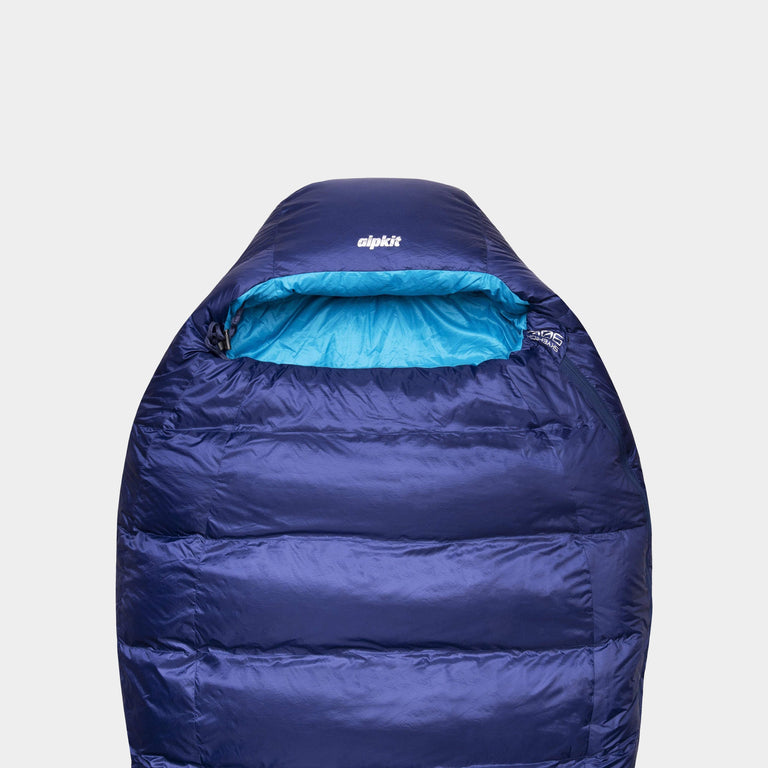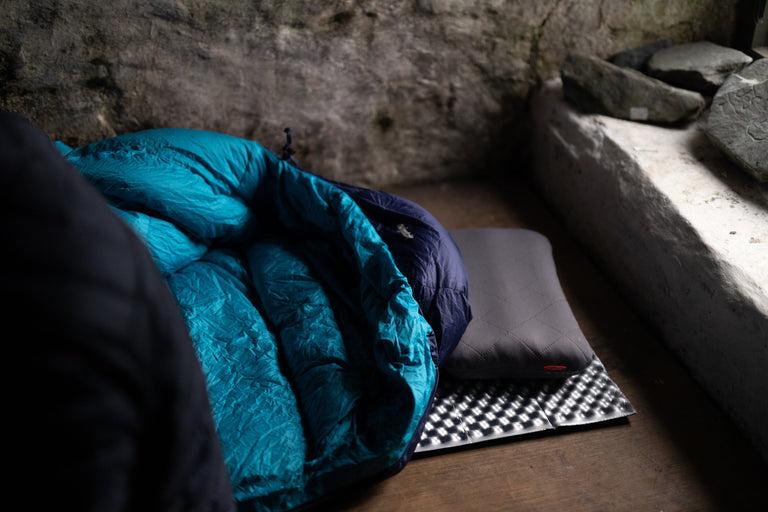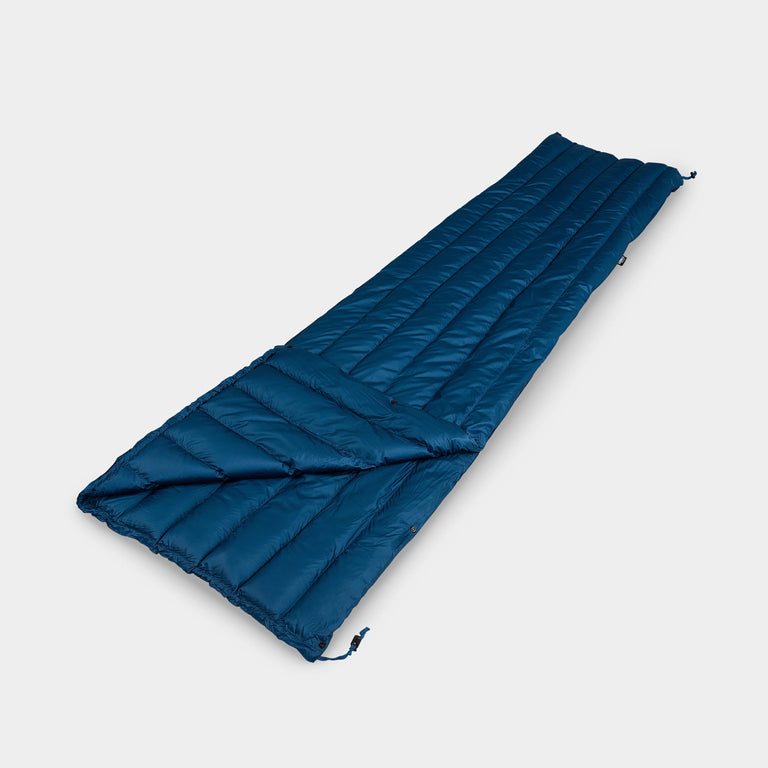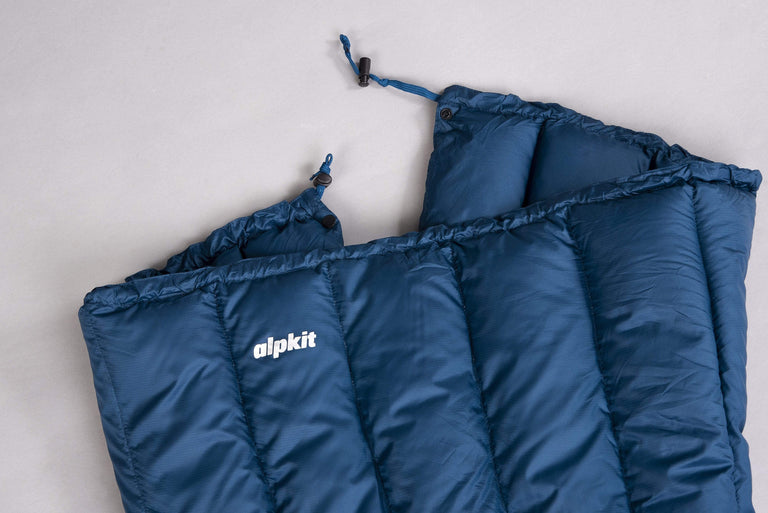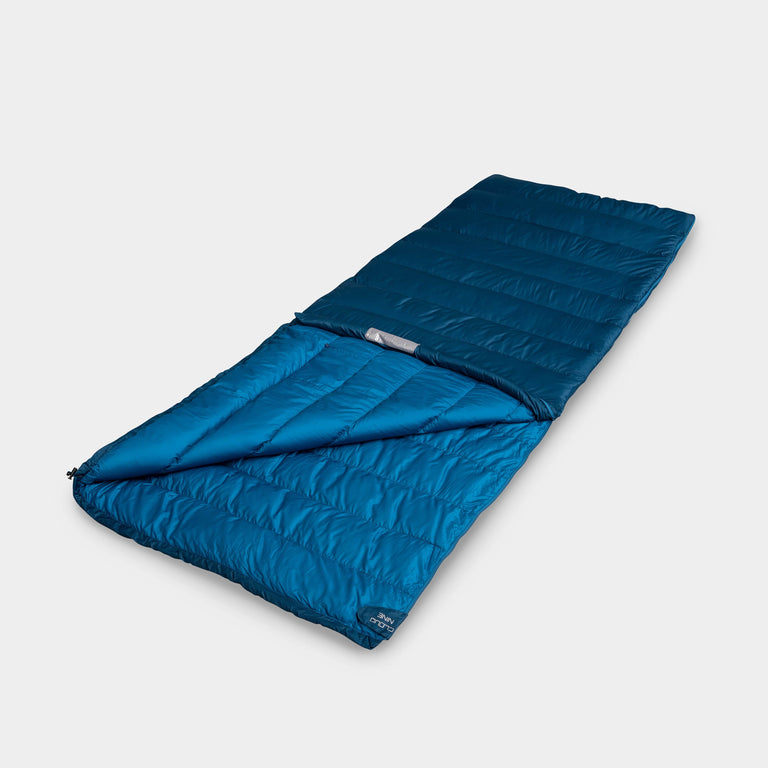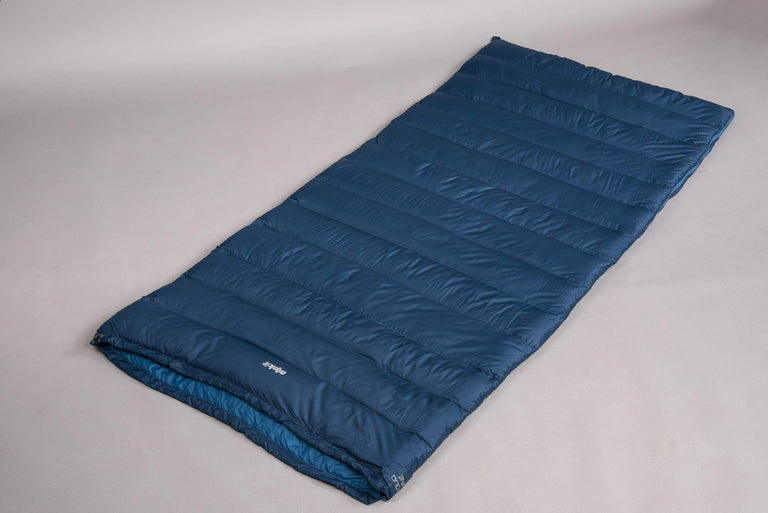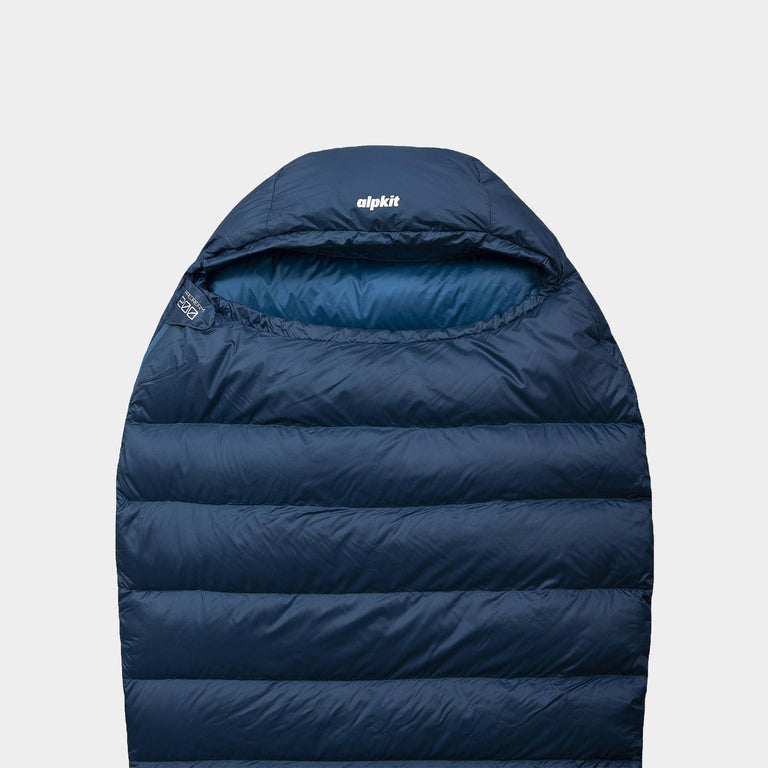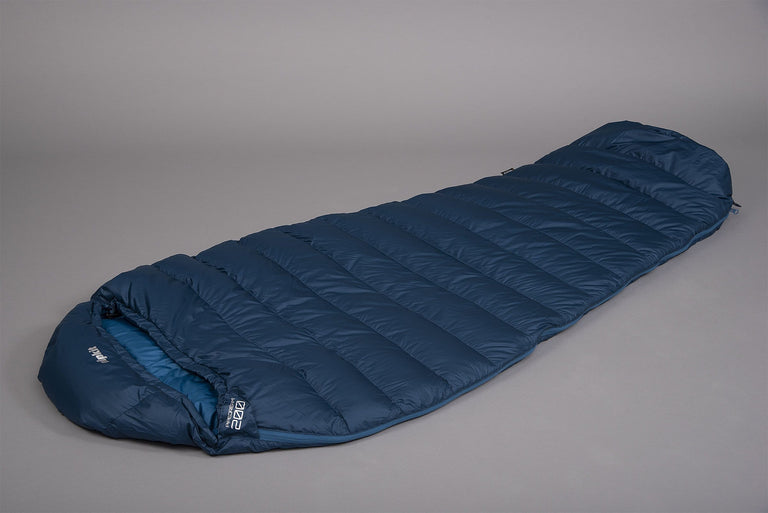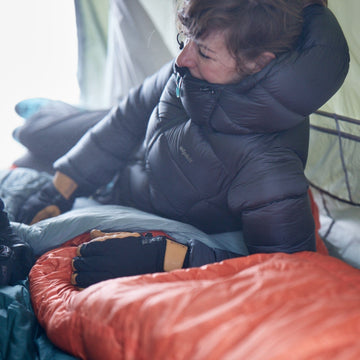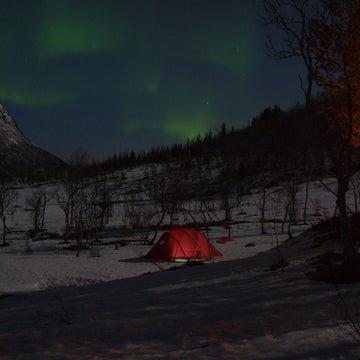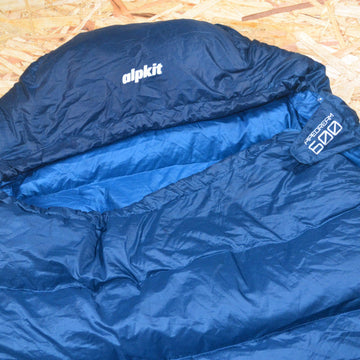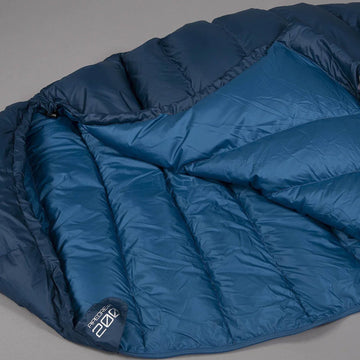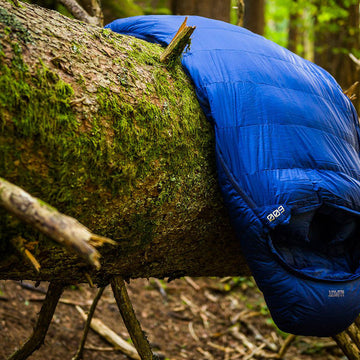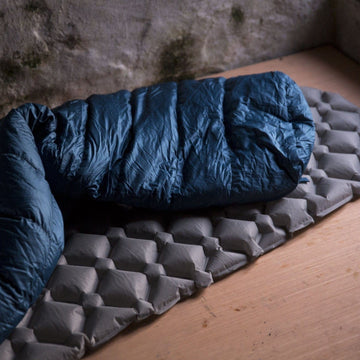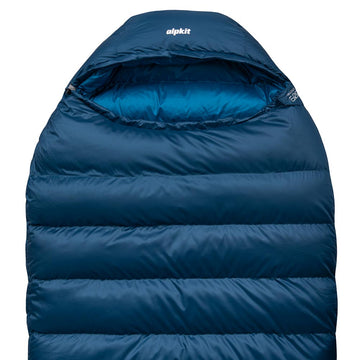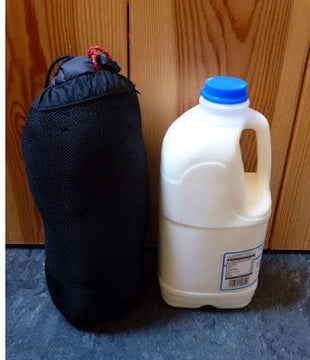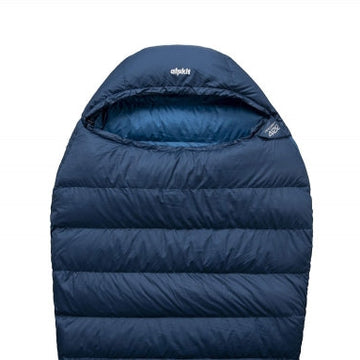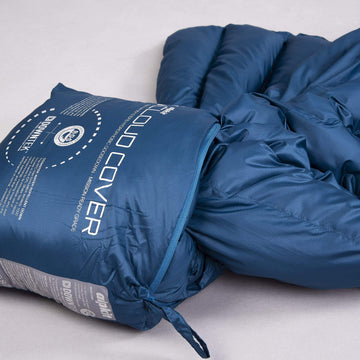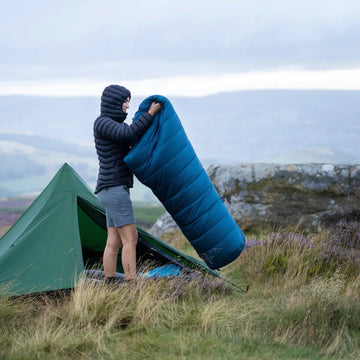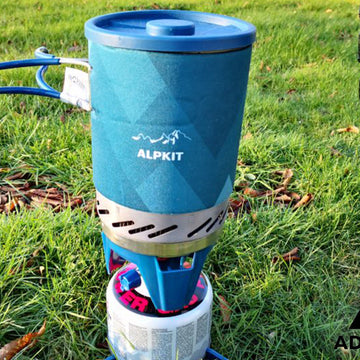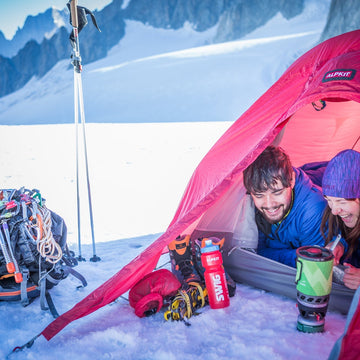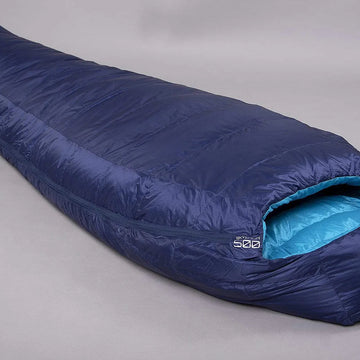
Our ultimate guide covers which sleeping bag insulation is best (down or synthetic), what the temperature ratings mean, and how to choose the right bag for you.
Sleep warmer, pack lighter. We reveal how the UK's top ultralight down and synthetic sleeping bags keep you warm all year round. Developed around 2 decades of obsessive gear testing our bags are valued for ethically sourced down, PFC-free fabrics and recycled Primaloft insulation.
In this article we are going to walk you through the process of choosing a sleeping bag. We are going to start by asking what you are going to use the sleeping bag for, where you are going to use it and when. Finally, we will share some tips on how to get the most out of your sleeping bag and throw in some detailed information about how sleeping bags are designed and tested.
Table of contents
What to think about when buying a sleeping bag
- What activity are you doing?
- Do you need to carry your sleeping bag?
- Where will you use your sleeping bag?
- When will you use your sleeping bag?
Sleeping bag use cases
- Sleeping bags for bikepacking
- Sleeping bags for winter mountaineering
- Sleeping bags for Ultra events
- Sleeping bags for general camping through the winter
What is inside a sleeping bag - Sleeping bag tech
Frequently asked questions
- What are sleeping bag temperature ratings?
- What is the difference between mummy and rectangular (caravan) sleeping bags?
- Do you need a sleeping bag liner?
- How do you wash your sleeping bag?
What activity are you doing?

We always start by asking the question "What are you using your sleeping bag for?" Ok, we know you are going to sleep in it, but we want to know your specific use case. You may not have one, or you may not realise you have one -yet. And that's fine. Most of our sleeping bags can be used across a range of scenarios, but by asking the question we can make sure you get the best sleeping bag for your needs, whether that is a general sleeping bag for use all year round, or an ultralight sleeping bag you are only going to use for alpine bivvies in spring.
Will you be carrying your sleeping bag?
If your activity involves carrying your own sleeping bag, weight and packed down size should be high on your list of priorities. This includes backpacking, bikepacking, alpine climbing, ultra-marathons and to some degree canoe touring and stand-up paddleboarding trips. These are all activities where you have very limited space. Bulk is your enemy and every gram makes progression more difficult.
If this is less important to you - perhaps you are car camping, sailing, open boat canoe touring, then it is less important. You are not directly bearing the burden and can feel comfortable making some compromises here and divert some of your budget elsewhere.
Where will you be using your sleeping bag?
This one is a bit more complicated because there are more variables to consider. Let's look at two big ones: altitude and humidity.
Effects of altitude on sleeping comfort
You could be in the valley or taking in the breathtaking views at 3000 metres. Why does this matter? Because there is going to be a large difference in temperature between the two. Known as the environmental lapse rate, a good rule of thumb is that the temperature will drop by 6.5°C per 1000 metres.
Effects of humidity on your choice of sleeping bag
This has more of a difference on your sleeping comfort than you may imagine. A high-humidity environment has a high percentage of water in the air. When thinking of high-humidity environments the first thing that springs to mind is hot, wet environments such as rainforests. Your skin struggles to breathe in its effort to thermoregulate, leaving you hot, sticky and swatting bugs.
But there is another, more commonly felt aspect of humidity here in the UK. As a maritime nation, we are exposed to cold, wet air which eagerly transmits heat away from our bodies. 5°C in the Alps could feel fresh and welcoming whilst at the same time in mid-Wales, giving you the coldest night's sleep you have ever had, leaving you to question if your sleeping bag is actually broken!
When will you be using your sleeping bag?
For some people camping is seasonal, perhaps this is why season ratings are so popular - more on this shortly. If you never camp in winter, there’s no sense in buying the warmest sleeping bag money can buy. Equally, opting for an ultralight summer sleeping bag might be a risk if you want to camp in spring and autumn.
What are season ratings and what season sleeping bag do you need?
Season ratings are a really simple, common-sense method of determining the suitability of your sleeping bag for use throughout the year. 1 season = summer, 2 season = spring and summer, 3 season = spring, summer and autumn, 4 season = spring, summer, autumn and winter.
While the system is simple to use, it lacks precision, particularly through the transitional months of spring and autumn.
The warmth of your sleeping bag depends on many things. Are you a warm sleeper? What’s the temperature like outside? Too much to say here, so we have written a guide to sleeping bag season ratings to help you choose the right sleeping bag for the weather.
Oh, by the way, there is also 5th season. This isn't anything to do with the effects of global warming, but covers outliers such as extreme altitude or arctic conditions.
Some specific use cases
Bearing all this in mind let's look at a few specific use cases and suggest which sleeping bags are the most suitable.
Sleeping bags for bikepacking
If you’re going bikepacking and want to squeeze your sleeping bag in between your handlebars, pack size is going to be your priority. Lightweight goosedown sleeping bags offer the best warmth-to-weight ratio for bikepacking or lightweight hiking trips.

Sleeping bags for high altitude mountaineering
High-altitude adventures need sleeping bags with the highest warmth-to-weight ratio. These need to pack down small to fit inside an alpine pack, but warm enough to keep you safe in subzero temperatures, whether camping or bivvying. Our AlpineDream range satisfies these requirements with the cosiest, toastiest of sleeping bags.
Sleeping bags for general camping
If you are setting up basecamp on your favourite campsite, pack size and weight will be less of an issue. You can go to town with fairy lights over your tent and rugs over your ground sheet. A less technical bag, like our Cloud Peak 400 is perfect for extending your camping season through the winter months.
Sleeping bags for Ultra-Marathons
For lightweight fastpacking outings, synthetic insulation – like in our Ultra sleeping bags – performs better than down when damp. If you’re expecting wet weather, this could be the advantage you need.
What is inside a sleeping bag?
There is one important area we have yet to cover, what do we put inside a sleeping bag to keep you warm. There are two choices when it comes to insulation: Down and Synthetic. Both will do the same job but in slightly different ways.
What is down?
Down comes from the underbelly of ducks and geese, a natural insulation layer that sits underneath their protective outer feathers. These light and fluffy ‘filaments’ trap lots of insulating air for very little weight. Down quality is measured by loft – the amount of space each down filament takes up. Think of it as a measure of ‘fluffiness’!
What is fill power?
Fill power (FP) is the scientific measurement of loft. The higher the number, the higher the loft, and the higher the quality of down. High-fill power down has a better warmth-to-weight ratio and will be more compressible. The number represents how many cubic centimetres a gram of down lofts to. 750FP means that 1g of down lofts to 750cm³. Anything above 600FP should be excellent quality down.
What is fill weight?
This is how many grams of down is inside your sleeping bag. sleeping bags often have the fill weight in their product name, e.g. PipeDream 400. Sleeping bag warmth depends on both fill power and fill weight – a 400g down bag with 750FP down might be warmer than a 500g down bag with 650FP down.
What is hydrophobic down?
Hydrophobic down is any down that has been treated with a durable water repellent (DWR). When down gets wet, the down filaments absorb water, collapse and clump together, losing all their insulation. Hydrophobic down dries quicker and repels water and moisture from your body for longer. You’ll still need to keep your sleeping bag dry, but this treatment helps it to resist damp and recover better. The DownTek™ PFC-Free Water Repellent Down we use stays dry for up to 13.5x longer than untreated down.
What is RDS-certified down?
The Responsible Down Standard is a voluntary standard that independently certifies ethically sourced down. The RDS logo guarantees that the down in your sleeping bag meets the highest of animal welfare standards. At Alpkit, we only use RDS-approved or recycled down.
What is Synthetic Insulation?
These are man-made polyester fibres designed to replicate the insulation and compressibility of down. Polyester fibres don’t absorb water so synthetic insulation keeps its insulating structure even when damp. There are lots of different brands and types of synthetic insulation. We use PrimaLoft® Gold, the highest quality of synthetic insulation available, and Thermolite® Ecomade, a durable, long-lasting fill.
How is synthetic insulation measured?
Most brands measure synthetic insulation by grams per square metre – often written as gsm or g/m². However, because there are so many different types of synthetic insulation, gsm only really helps to compare sleeping bags using the same brand and fill type. This is where the temperature ratings are useful, again.

Are down sleeping bags better than synthetic?
Both down and synthetic sleeping bags have different advantages. They’re the two types of insulation used to keep you warm – down feathers and synthetic insulation.
Down sleeping bags have the best warmth-to-weight ratio and are the most compressible. This means they’re generally better for backpacking, bikepacking or any situation where you’ll have to carry your bag a long way. This also makes them ideal for adventures in extremely cold environments. Synthetic sleeping bags are better for damp conditions or for repeated heavy use. Their insulation is much easier to wash and care for than down.
How long will a synthetic sleeping bag last?
Synthetic sleeping bags might last for 3-4 years. Down, on the other hand, can last as long as 10 years. But this, of course, depends on how much you’re using your sleeping bag and how much TLC you’re giving it. We’re all about loving your gear for longer.
Do down sleeping bags lose their loft?
They can - down sleeping bags can be less thermally efficient if they’re not looked after properly. When the down gets wet, or if it’s compressed too much too often, the down gets squished. And without the insulating pockets of air in between the down filaments, it won’t keep you as warm. Best practice? Look after your down sleeping bag and it’ll look after you. That means keeping your sleeping bag, clean, dry and lofted.
Frequently asked sleeping bag questions
Who would have thought there could be so many questions about sleeping bags! We will do our best to answer some of the most common here.
What are sleeping bag temperature ratings?
Temperature ratings help determine if a sleeping bag is suitable for the environment you are going to be using it in. Typically it gives you an 'operational' range, for example, a sleeping bag may be designed to keep you warm between 0˙C and +5˙C without being excessively hot or cold. Tests such as EN13537 are carried out under strict laboratory conditions based on a standard mannequin. While providing a good starting point you should remember in reality, we are all humans and not mannequins in a lab. At the end of a big day of doing awesome stuff, the last thing we can control is the environment. Sleeping bag ratings are just a guide, and it is up to use our campcraft to adapt our sleep system to the prevailing conditions.

Choosing the best sleeping bag is going to keep you warm and cosy on your next camping, but there is more you can do to ensure a restful night. Check out our guides on How to choose the best camping stove and How to choose the right fuel for your camping stove. Whether bikepacking or camping, these lightweight stoves are ready for your adventure. Choose the right model and unleash your camp chef skills and ensure you have what you need to keep your stove running efficiently. Choosing the best camping stove can be tricky. Learn about isobutane, propane, butane, and how to pick the right fuel type for your next outdoor adventure. Your stomach will thank you for it.
What's a sleeping bag baffle?
Baffles are the separate compartments that hold the insulation inside your sleeping. Baffles stop insulation from ‘migrating’ (sinking) to the bottom/sides of your bag and creating cold spots. There are two main types of baffle construction (this applies more to down sleeping bags than synthetic bags).
Hoods, neck baffles and zip baffles
Make sure the hood fits snugly and is easily adjustable. Most sleeping bags also include adjustable neck baffles (above) to stop cold air being sucked in when you move. Zip baffles stop draughts from squeezing between your zip teeth.
What is stitch-through construction?
This means that each baffle has been stitched all the way through the sleeping bag fabric. Stitch-through is the lightest construction and the most compressible, but it can create cold spots along the lines of the stitching.
What does box-wall construction mean?
Box wall construction uses a divider of fabric between each baffle so that each baffle is shaped like a. erm, box. Box wall construction allows the down-to-loft better. But the extra fabric does add weight and make it less compressible.
How do you stay warm in a sleeping bag
A sleeping bag is a very efficient insulator - but it is important to remember a sleeping bag is not an electric blanket. You heat the bag, not the other way around. Good campcraft is necessary to get the most out of your sleeping bag - think of it as part of a complete system. We have put together some advice on how to stay warm camping around the SLEEP acronym; Surface, Layers, Eat, Extremities, Protection.
What are the different shapes of sleeping bags?
There are two main types of sleeping bag shape, these are known as mummy and rectangular
Mummy: These sleeping bags have a tapered shape that’s wider at the shoulders and narrows towards the footbox. They look just like an Egyptian pharaoh's sarcophagus! This is the most ‘thermally efficient’ shape (the easiest to warm up and keep warm) and the lightest. The ultralight PipeDream and Ultra sleeping bags have a highly tapered shape to save weight while the SkyeHigh bags have a more relaxed mummy shape. The AlpineDream and ArcticDream leave extra space so you can wear more layers inside your sleeping bag.
Rectangular: These sleeping bags have much more space to spread out – not quite a ‘starfish’, but not far off either! Rectangular sleeping bags are better if you’re sleeping on a campsite for multiple nights in milder weather or in a bunkhouse/mountain hut/cold hostel. You can often zip these sleeping bags together to form a double bag, like with our Cloud Nine.
Do I need a right-zip or left-zip sleeping bag?
We offer left and right zips on all our sleeping bags. It’s easier to reach across your body with your lead hand to unzip your sleeping bag. Left zips are better for right-handers and right zips are better for lefties.
Do I need a sleeping bag liner and do they add warmth?
The frequent camper will find a sleeping bag liner has many benefits. Not only do they add a little extra warmth but they also protect your sleeping bag from grime and are a lot easier to wash - especially on a long trip. You can also use your liner by itself in hot weather or if you are staying in an Alpine hut.
How to wash your sleeping bag
Washing your sleeping bag is important to maintain its performance. You can do this yourself at home, we have an easy to follow guide to washing your sleeping bag, and we also offer a convenient sleeping bag washing service if you do not have the time or space to do it yourself.
Choosing the best sleeping bag for your next camping adventure is key to maximising your enjoyment. The next step is to, check out our guide on How to choose the best camping mat. This guide will help you pick the perfect mat that compliments your sleeping bag, understand R values, and stay comfortable all night.
Happy Camping!
